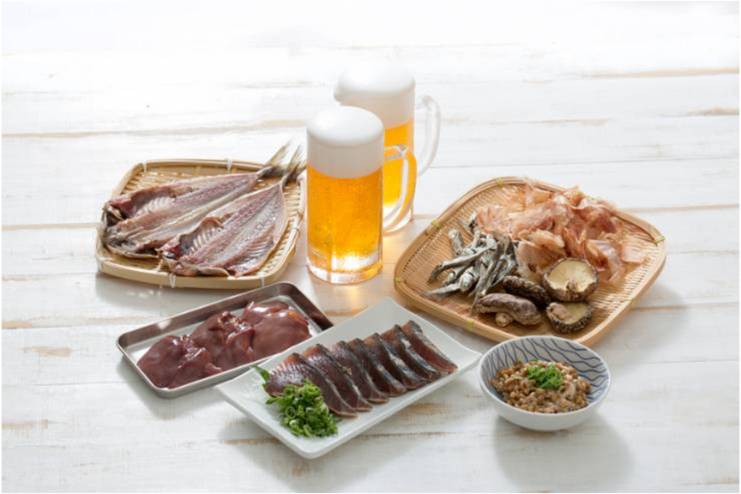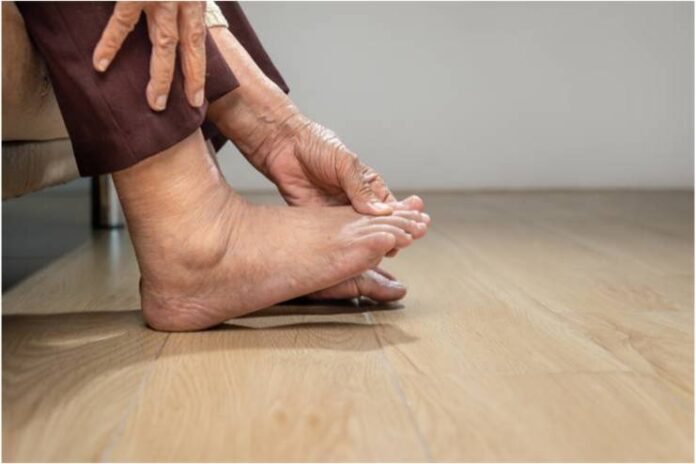Affiliate Disclaimer
Some links in this article are affiliate links. We may earn a small commission if you make a purchase through these links, at no extra cost to you. We only recommend products we find useful to our readersUnderstanding Gout
Gout is a common and complex form of arthritis. Gout triggers sudden, sharp pain, redness, and soreness in joints. The pain flares most frequently in the big toe; however, it may affect any joint, including the ankles, knees, and fingers.
The most common cause of gout is a build up of uric acid crystals in the joints. Uric acid is the byproduct of purine breakdown in the body. Purines are mainly found in food and beverages, especially red meat, organ meats, seafood, and alcoholic beverages.
These gout symptoms may cause persistent discomfort. Certain factors that lead to such symptoms are high-purine food, alcoholic beverages, and drinks high in sugar. Other contributory factors or triggers are stress, dehydration, and some drugs.
The key to managing the pain is early recognition of symptoms and identification of the triggers. With an effective management strategy involving dietary changes, medication, and lifestyle modifications, it is possible to reduce the frequency and severity of gout attacks and improve the ability to perform daily activities.
Pain Management Techniques

Effective pain management for gout involves a holistic combination of medications, home remedies, and lifestyle changes.
Medications
People resort to OTC gout treatment for immediate gout pain relief. Ibuprofen and naproxen are two of the most common NSAIDs for the condition. If taken early, these OTC gout treatments can significantly shorten the duration and severity of a gout flare-up.
Prescription gout medications include stronger NSAIDs like indomethacin, colchicine, and corticosteroids. Colchicine reduces inflammation when taken within the first 24 hours of an attack. Corticosteroids, taken orally or injected, decrease inflammation and pain. Medications such as allopurinol and febuxostat are taken to reduce the uric acid level in the blood so that reduced accumulation of uric acid crystals in joints avoids further attacks.
Home Remedies
Natural gout remedies play a crucial role in gout pain relief at home. Applying an ice pack to the affected joint may help decrease inflammation and numb the area to relieve intense pain. The ice pack should be wrapped in a cloth and applied for 20 to 30 minutes several times daily.
Elevating the affected joint higher than the level of your heart can lower swelling. During flare-ups, rest is essential as it may exacerbate pain and inflammation.
Preventing Flare-Ups

Gout is a chronic condition characterized by painful flare-ups, which can be mitigated through dietary adjustments, weight management, and medication adherence. Implementing these strategies can significantly reduce the frequency and severity of attacks.
Dietary Adjustments
A gout diet is central to preventing flare-ups. Certain foods can elevate uric acid levels in the blood, leading to the formation of urate crystals in the joints, which trigger painful attacks. To minimize this risk, it’s essential to avoid high-purine foods. These include red meat, organ meats, certain types of seafood (such as anchovies, sardines, and shellfish), and high-fructose corn syrup found in sugary drinks and processed foods.
Conversely, incorporating low-purine foods can help manage the condition effectively. Gout-friendly foods include fruits, vegetables, whole grains, and low-fat dairy products. Cherries, in particular, have been shown to reduce uric acid levels and inflammation.
Lifestyle Changes
Long-term management of gout pain requires significant lifestyle changes, including a low-purine diet, hydration, and regular exercise.
A gout-friendly diet can prevent attacks. Low-purine foods like fruits, vegetables, whole grains, and low-fat dairy products should be added to your gout diet. High-purine-level foods, including red meat, organ meats, and seafood, should be avoided. Alcohol, sugary drinks, and processed foods can also trigger an attack and should be avoided.
Hydration and gout are linked, and hydration is essential in the management of the condition. Water flushes out the uric acid, therefore there is a reduced chance that it will form crystals in the joints. Drink at least eight glasses of water a day to stay well-hydrated.
Regular exercise is good for health in general and might support keeping a healthy weight, thereby reducing the risk of gout attacks. Opt for low-impact exercises, like swimming, walking, or cycling, to reduce excessive stress on joints.
A combination of medicines, home remedies, and lifestyle changes can help a person manage the pain and reduce flare-ups.
Weight Management
Maintaining a healthy weight is vital for its prevention. Excess body weight increases the production of uric acid and decreases its elimination, leading to higher levels in the blood. Weight management for gout involves a balanced diet and regular physical activity. Gradual weight loss is preferred over rapid weight loss, which can trigger an attack due to a sudden increase in uric acid levels.
Low-impact activities such as walking, swimming, and cycling are recommended for gout patients, as they do not put excessive strain on the joints.
Gout Medication Adherence
It’s important for patients to take prescribed medications to avoid flare-ups. Allopurinol, febuxostat, and probenecid lower uric acid levels, which eventually reduces the frequency of attacks. Even when the symptoms are absent, they maintain stable uric acid levels and prevent flare-ups.
These medications work best if taken on a regular basis. Skipping doses or discontinuing medication without consulting a doctor will lead to an increase in the uric acid levels in the body, thereby increasing the risk of attacks.
Therefore, adhering to the prescribed treatment plan and having regular doctor checkups are essential for managing gout pain.
Long-Term Strategies

Long-term management involves regular check-ups with healthcare providers and effective stress management. These help monitor uric acid levels and manage the condition, thereby reducing the frequency and severity of flare-ups.
Regular Checkups with Healthcare Providers
Consistent monitoring of uric acid levels is essential for the long-term management of the condition. Regular check-ups with healthcare providers allow for timely adjustments to treatment plans, ensuring that uric acid levels remain within a healthy range.
These appointments often include blood tests to monitor uric acid levels and assess the effectiveness of medications. Staying proactive in scheduling and attending these check-ups can prevent complications and help manage your condition more effectively.
Stress Management Techniques
Stress can cause an inflammatory response, aggravating the symptoms of gout. Including stress management strategies for gout in one’s daily routine will help counteract these effects. Here are some examples of techniques that help reduce stress:
- Deep Breathing: Deep breathing relaxes both the mind and body. This is done by slowly inhaling through the nose, holding it for a second or two, and then slowly exhaling it out of the mouth.
- Progressive Muscle Relaxation: This technique relieves physical tension by tensing and relaxing muscles one by one in every part of the body, starting from the toes and working up to the head.
- Mindfulness Meditation: Gently bring your attention to the present moment without judgment. This practice, combined with conscious breathing, decreases stress and increases awareness of one’s thoughts and feelings.
- Yoga or Tai Chi: These gentle exercises help in relaxation through movement and breathing, which helps open up one’s body and decrease stress.
- Hobbies: Doing things one enjoys, such as reading a book, listening to music, or walking outside in nature, can help one relax and unwind.
- Social Support: Staying in touch with close friends and family members for moral support or volunteering in the community will reduce stress and bring a sense of fulfillment.
Long-term strategies, including regular checkups and stress management techniques, can significantly improve gout patients’ quality of life, helping them manage and prevent future flare-ups.
Living With Gout

Living with gout can be overwhelming, and encouragement from someone may be all that is needed to alleviate the suffering. A gout support group provides emotional support, encouragement, and practical help.
Joining Support Groups and Finding Community
Support groups bring together people to share their experiences, exchange valuable tips, and have encouragement from others who know exactly how it feels to have this condition. You can attend in person or online, depending on your preference or needs. Community brings a sense of belonging and, therefore, reduces feelings of isolation while managing the condition.
Online forums, social media groups, and local health organizations often host support groups for people with this condition. Participating in these online communities can offer valuable insights into managing symptoms, adhering to treatment plans, and maintaining a positive outlook. Engaging with others who are navigating similar experiences fosters a sense of camaraderie and resilience.
By seeking support and building connections, the patients can better manage their condition and enhance their overall quality of life.
Conclusion
Managing gout effectiveness depends on a comprehensive approach, including medicine, lifestyle changes, and getting support. Understanding the importance of medications to relieve pain, implementing home remedies, dietary adjustments, and prescribed treatments significantly help prevent gout flare-ups.
To manage gout in the long term, it is important to schedule regular checkups, practice stress management techniques, adopt gout lifestyle tips, and join support groups.
Sticking to a plan will let one maintain a good quality of life while avoiding future complications. Living well with this condition will be possible when one has the right strategies in place.
In this Article



















